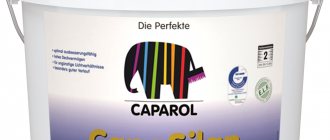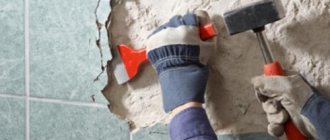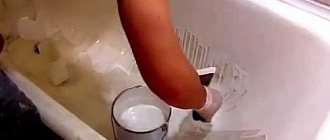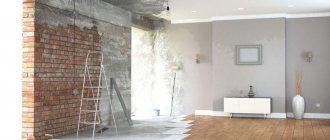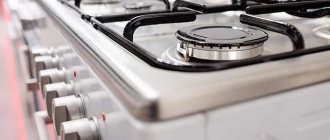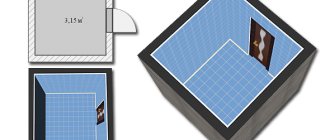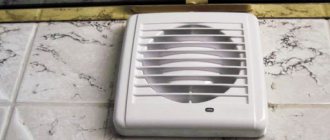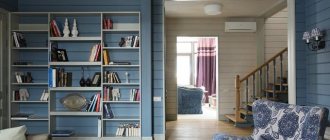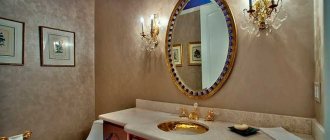Repair for all people is a very painful and costly issue, and it often lasts for more than one year, including various types of work, including painting. According to professional finishers, today one of the most effective painting compositions is acrylic paint. Construction and finishing materials stores offer a wide range of these products, which is very easy to get confused about.
In our article we will try to analyze the most popular acrylic paints, talk about their composition and nuances of use. In addition, we would like to start the rating of the best acrylic paints of the year with a number of useful tips regarding the correct choice of such products.
Characteristics of waterproof paint
Manufacturers try not to include harmful chemicals in paints. Dyes contain polymer compounds and some auxiliary components.
Moisture-resistant paints have the following properties:
- They do not dry quickly, at least 20 hours;
- Some types of paints are resistant to ultraviolet rays;
- Do not fade in the sun;
- They withstand various environmental influences, so they can be used for external painting;
- Some dyes have antifungal protection.
Which rooms are considered wet?
There is a fairly wide list of rooms that are classified as high humidity levels. This includes:
- Hallway;
- Bathroom, shower area;
- Toilet;
- Kitchen;
- Bath;
- Room with a swimming pool.
Choosing paint for these rooms is not easy; the following points must be taken into account:
- Frequent surface cleaning and repair work is required;
- Condensation accumulates here, moisture is constantly present, so the use of moisture-resistant paint for walls is simply a must;
- Resistance to abrasion and dirt is required;
- Eco-friendly composition and non-flammability.
Condensation accumulates here, moisture is constantly present, so the use of moisture-resistant paint for walls is simply a must.
Pros and cons of waterproof paint
Moisture-resistant paints have a number of advantages:
- Wide range of colors;
- Eco-friendly;
- Perfectly masks small defects on walls;
- Easy to apply to any surface;
- Do not deteriorate in aggressive environments;
- The coating is hygienic.
Dyes also have some minor disadvantages:
- Before coating, the walls must be leveled, since large defects will not disappear;
- Condensation may appear because the substance has low vapor permeability;
- Walls can only be painted at positive temperatures above 5 degrees.
Top 4. Dulux 3D White
Rating (2021): 4.45
86 reviews taken into account from resources: Otzovik, OZON, LeroyMerlin
The best solution for small rooms The paint has a 3D effect. Dazzling white color visually expands even a tiny space - it seems that the area has increased and the ceilings have become higher.
- Characteristics
Average price: 2380 rub.
- Country Russia
- Coating type: matte
- Smell: neutral
- Consumption: 13 m2/l
- Drying: 4 hours
- Volume: 5 l
An excellent solution for final decoration. "Dulux 3D White" has a dazzling white color that cannot be compared with analogues. It contains optical brightener and pieces of marble, which provide such pronounced whiteness. A room painted in this shade visually expands, and its ceilings seem higher. This manifests itself as the so-called 3D effect. Therefore, if you are looking for wear-resistant and durable paint for a small room or small kitchen, then this is exactly what you need. The composition is easy to use - it does not flow and does not leave streaks. However, some buyers note that the consistency is still somewhat liquid, which is why they will have to be painted in two layers.
Advantages and disadvantages
- Marble particles and optical brightener in the composition allow you to achieve the whitest possible color
- Provides a 3D effect and visually expands the space
- Easy to clean
- Does not flow, does not form streaks
- Dries quickly
- Thin consistency, therefore not the highest coverage
Suitable paints for the bathroom
Types of bathroom paints must have the following characteristics: resistance to moisture, safety, so that mold and mildew do not form due to dampness.
The most common are dyes with micropolymer compounds diluted with water. The cost of such paints is low.
In fact, water-based bath paints can be divided into:
- Oily;
- Silicone;
- Acrylic;
- Silicate;
- Alkyd;
- Chlorinated rubber.
The most expensive are silicone dyes; they have high quality characteristics. Acrylic and silicone paints are great for bathroom walls. They form a protective film on the surface and prevent moisture from accumulating and fungus developing. The paints contain no harmful substances to the human body, they are not poisonous, and dry quickly.
What to choose
When painting bathrooms with moisture resistance, the walls of which are finished with plaster coatings, plastic, concrete, plywood, acrylic paints will have undoubted advantages. For finishing plaster or drywall, but with low requirements for durability, it is permissible to use water-based paint. When finishing external surfaces, metal (for example, roofing), it would be ideal to use polyurethane or rubber paints. Latex is suitable for painting metals, glass and reinforced concrete, while alkyd enamels can be used very effectively on basement walls.
Characteristics of oil paint
This is the cheapest option for painting surfaces. It is created on the basis of synthetic oils or drying oil.
The insolubility of mineral particles requires the paint to be thoroughly mixed before use.
The advantages include:
- You can paint on wood and metal;
- Does not allow moisture to pass through;
- The result is a smooth surface;
- Good adhesiveness.
There are more disadvantages:
- Strong smell before drying, takes a long time to dry (24 hours);
- The fumes are harmful;
- The color changes over time;
- It fades from the sun's rays;
- In places where water gets in, it begins to crack and peel.
This coating will have to be renewed every year, so it is not recommended to use oil paint in the bathroom.
Painting the ceiling correctly
The ceiling is the first surface that needs to be painted, even if you decide to paint the walls too. And if you have already laid the floor covering, which is very unnecessary, do not forget to cover the surface with a protective film. Painting the ceiling must begin with the choice of paint. If you think that white is always the same, then you are mistaken. All acrylic paints have three degrees of whiteness: white, super white, milky white.
To achieve the best result, it is recommended to use the whitest and brightest paint possible.
It is sometimes very difficult to assess the degree of whiteness if there is nothing to compare it with. Therefore, when going to the store, take an A4 sheet of paper with you and ask the seller to open a jar of the selected shade. Compare its color with the sheet, you need the same or whiter, but not paler, otherwise your ceiling will seem dirty.
It is also worth noting that matte paints are preferable to glossy ones. They will help hide minor imperfections and make the surface visually smoother and more attractive. If you decide to make a colored ceiling, then in this case it is better to choose gloss. You should be careful when using tint paints , because this technique can visually reduce the height of the room. Therefore, this option is suitable for large, high and well-lit rooms.
Now let's start
preparing the surface. It must be properly cleaned of old whitewash, wallpaper or other materials. To remove whitewash, use a cloth soaked in warm water. Wipe the surface with it until the water in which you rinse it is clear. Don't forget about personal protective equipment - glasses and a hat. The joints between the ceiling and the walls must be washed with a brush. Cracks, irregularities or holes must be covered with putty. After drying, clean it with a mesh and prime the surface well for better adhesion to the paint. If there are various decorative elements on the surface to be treated, such as rosettes or baguettes, you can glue them immediately and paint them together. This way you will hide unnecessary joints and create a single, flawless composition.
Now mix the paint thoroughly, reaching to the very bottom. You can use a construction mixer for this. Often the composition is too thick and requires adding water. Its quantity is always specified on the packaging. If, upon opening the jar, you see a film on the surface , it must be removed, preventing it from getting into the main mass and, moreover, not mixing with it. If you get small pieces, it is better to strain the mixture, otherwise all these grains will definitely end up on your ceiling. Now you need to decide on the working tool - a brush or a roller.
If the area is small, then a brush will be enough. If it’s decent, you’ll just get tired, so it’s better to choose a roller of the right size. When working with any tool, do not apply too much paint so that it flows down the handle. The roller generally needs to be rolled over an empty surface after being completely immersed in paint. The more convenient you are, the more you work.
The width of the strip and the thickness of the layer will depend on the pressure With weak pressure, you will only apply a thin strip of uneven coverage, with strong pressure, every stroke will be visible. Therefore, everything should be in moderation. Before starting, paint the corners around the perimeter with a brush; it is difficult to get there with a roller. It is necessary to apply paint not from the very corner, but at a distance of half a meter from it. The first strokes should apply the required amount, and subsequent strokes should smooth it out. Use cross strokes to blend previous strokes and move away from the window. the second layer perpendicular to the first, and then smooth the surface with an empty roller.
After applying the first layer, look at the result from different corners of the room and
look for gaps. If they are there, but the paint has already dried, you should not paint them separately with a brush, otherwise noticeable stains will form. If these places have not had time to dry, then you are in luck, and you can carefully go over them again with a not too wet roller. The second layer should be slightly thinner than the first to blur the defects and is applied towards the light to cover the first. This way your coverage will be even. If, after the second layer has dried, you again notice gaps, do not even try to paint over them; now you need to carefully clean the entire ceiling with fine sandpaper. If you clean only certain places, then even after repainting, the spotting will remain. So take your time, move in small sections and follow one direction of strokes, and you will definitely succeed.
Silicone water emulsion
The paint is odorless and easy to work with. It has its own positive characteristics:
- Fits well on any surface, even stone and concrete;
- A perfectly flat surface is not needed; it can hide some unevenness;
- Can be used at any temperature;
- The paint layer retains water but allows air to pass through, so it can be called breathable;
- Fungi and mold do not form;
- Easy to clean;
- Not afraid of sunlight.
Minus the cost, expensive paint. But this is compensated by the service life (25 years). It is better not to apply it to a metal base, as the vapors activate the formation of rust.
Water-based acrylate paint
If we talk about which bathroom paint is better, then it is acrylic. It has the most optimal properties:
- Slightly perceptible odor when drying, and then disappears completely;
- Resistant to moisture;
- Possesses vapor permeability;
- Adheses well to the surface;
- Can be used at any temperature, suitable even for a bath;
- Does not fade, is not afraid of UV rays;
- Eco-friendly.
A wide range of paint colors retains brightness for a long time.
The disadvantage is that the paint takes a long time to dry and the walls need to be prepared for painting. If you choose acrylic paint, then you need to know that when changing paint you will have to completely remove the applied acrylic layer.
Is it advisable to paint the floor?
Yes, the floors really are painted and, moreover, this coating has excellent wear-resistant properties. And the special matte shine of the surface will avoid noticeable scratches. These paints can be used to paint concrete, having previously cleaned it of various contaminants, grease stains, dust, and primed it.
, wooden floors are sanded and treated with wood putty. After drying, it is cleaned and the surface is treated with deep penetration primer. The paint, penetrating into microcracks, perfectly fills them and contributes to the durability of the surface. The technology for applying paint to the floor is very similar to the previous process described, so you should not have any difficulties.
The main thing is to remember to carefully paint the corners and baseboards. Be sure to pay attention to the fact that the packaging says “washable”. To secure the surface layer and prevent it from peeling and chipping, you can open the floor with clear varnish after the paint has completely dried. If there are special acrylic-based mastic paints This surface is easy to clean and very durable.
Characteristics of latex paint
Latex comes from the sap of rubber, which dissolves in water. When dry, a film appears that does not allow water to pass through. Pros:
- Quick-drying composition;
- Without smell;
- Easy to apply and clean;
- Durable.
Important: Good coloring is achieved by applying two layers.
There are also disadvantages:
- Before painting, you need to putty the walls with an even layer;
- Suitable for rooms with temperatures above 10 degrees Celsius;
- Requires additional antifungal coating;
- High price.
Although the paint is expensive, it costs little, and the silky shine on the walls lasts a long time.
Features of wall painting
We have already said that one of the most important stages is the stage of preparing the surface and bringing it to the desired state. First of all, to do this it is necessary to remove the old coating. This is especially true for small pieces of wallpaper that are tightly stuck. They will have to be thoroughly soaked and removed with a spatula. Now you need to go over the entire surface with a spatula or special grouting mesh and make sure that there is nothing unnecessary on it. After cleaning, the walls are thoroughly primed. After it has dried, it is necessary to evaluate the straightness of the surface and identify the presence of defects. If there are any, they need to be leveled using putty and a leveling layer must first be applied to the entire surface. After drying, the putty is thoroughly cleaned and primed again to remove dust.
If your wall is now perfectly smooth, then apply a layer of finishing putty on top, after it has completely dried,
sand it with a mesh and prime it again, and start painting. If you are not satisfied with the result, apply putty again to the problem areas and repeat the process until you get the desired result. To strengthen the base, some experts recommend gluing a layer of fiberglass before applying the finishing putty. This is not a mandatory point, but if you want to additionally reinforce the wall, then this will only be beneficial. To apply the paint itself, you will need a medium-sized flat brush, a small roller and a carriage for pouring liquid.
First, all the corners and junctions of the walls and the ceiling are well painted with a brush, after which two layers of paint are applied using a roller. A very important point - paint with a brush only once. Don't apply too many layers of paint. If the coating is too thick, it may crack. The second layer can be applied only after the first has completely dried. Sometimes smudges may form during the process. To avoid this, you need to monitor the amount of material on the tools. Do not apply too much paint and periodically wring out the roller, otherwise it will definitely drip or flow down the wall. It is better to cover the floor in front of the wall with old newspapers or film. Sometimes walls are painted not one color, but several.
If you want to maintain clear transition lines, use masking tape to do this. Stick it on the wall, separating the border of the first color, and paint the desired fragment. Once completely dry, remove the tape and stick a new strip onto the colored area, leaving a couple of millimeters untaped, and don't forget to stick the border of the next color. Paint the measured area again and continue repeating the process until you have applied all the desired shades. apply a variety of patterns to painted walls using stencils or simply draw, if your skills allow it.
It is not recommended to use the same stencil twice if the side adjacent to the wall is stained with paint. You risk damaging the coating. It’s better to stock up on the required number of sheets at once. After complete drying, your walls will delight you with their smooth, strong surface for a long time.
Alkyd paint
This type is used for any work, but the dye has a strong smell because it contains white spirit.
The advantages of such enamel are that it:
- Resistant to aggressive environments;
- Does not change color;
- Highly durable;
- Dries quickly;
- Withstands any temperature.
Main disadvantages:
- Toxicity and odor;
- Does not allow vapor or air to pass through;
- Requires pre-treatment of walls with an antifungal compound.
If this paint is used in the bathroom, then care should be taken to have a good ventilation system. You need to choose imported products, they do not smell as strong and are less harmful.
Each of the options is suitable for painting bathroom walls. But you need to know that in places near water you should choose paint products that are breathable and moisture-resistant. This is of great importance for interior decoration.
For wood
If you decide to create moisture protection for wooden surfaces using paints, you usually choose from the following types:
- Water-dispersed;
- Alkyd;
- Polyurethane;
- Oily ones.
If you decide to create moisture protection for wooden surfaces using paints, then you usually choose from water-dispersed, alkyd, polyurethane, and oil-based ones.

